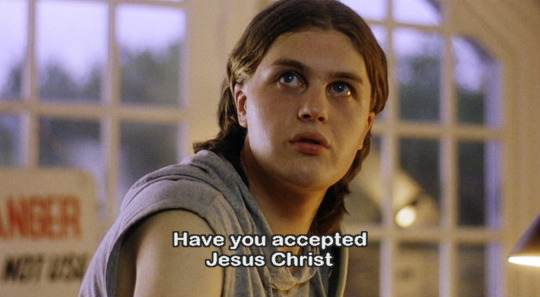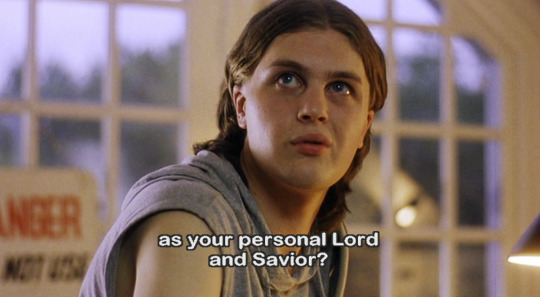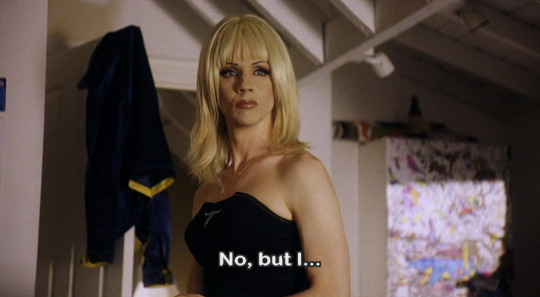Photo

EL SALVADOR. 1985. Panchimalco, located 17 km to the south of San Salvador. November, 1st. Celebration of the Day of the Dead, merging indigenous customs with Catholicism. by Jean Gaumy.
8K notes
·
View notes
Text
Loneliness and Reason
I have just watched Mantícora, a film by Carlos Vermut. What I first thought at the time of coming out from the Cinema’s room was: “I am feeling traumatized after watching this”. But I really wasn’t. I was really shocked because I felt reflected in the main character’s story.
I was thinking: how can I empathize with the story of a paedophile? It is the good part of movies, you don’t have to be like the characters, or your life doesn’t have to be like their lives to feel that you have lived the same experiences.
The movie is about to fight loneliness. Julián, the main character, is starting to have anxiety episodes and the doctor tells him to talk to someone, he says it is important to talk. Then he starts socializing a bit more and goes to a party where he meets Diana. She’s a girl from Barcelona who lives alone with her father and takes care of him as he is sick (he suffered from an ichthus).
They have a date some days after in the Museo del Prado, and there they visit the Goya’s black paintings where Julián get knocked watching the paint “Saturn Devouring His Son”. Once they are out of the Museum, Diana tells Julián she had been in the Museum with his father when she was little, but he didn’t allowed her to enter in the black paintings room.

This reference to Goya makes me automatically think about “The Sleep of Reason”, a book from Antonio Buero Vallejo which I read some years ago and is about the last years from the painter Francisco de Goya, when he was having troubles with the monarchy because of his liberal ideas, exactly the same time as he was loosing his hearing and painting what were later considered “black paintings”. It was a time when people said that he was getting mad and that’s why he was only painting these terrifying paints.
Were Julián and Diana suffering from the same as Goya at that time? Is loneliness the worst feeling a human being can have?
After watching the movie I went for a walk by Madrid’s wet streets, and I decided to go by the Museo del Prado as I was thinking my friend Teresa, who walks the dog by the Prado gardens could be walking it at that moment and we could have a chat about the movie as she told me she had watched it.
When I get to the Museum's square, I saw she wasn’t there. Maybe she walked the dog before or maybe she would do it later. Then I decided to go around the building and I got surprised as I found the “Monumento a Goya”, a statue about Goya. In the top there was a statue of the painter and in the base some sculptures simulating the black paintings, and a sign that said “El sueño de la razón produce monstruos” (The Sleep of Reason Produces Monsters).

Then I just realized why (SPOILER ALERT) Julián losses his mind and throw himself off the balcony after trying to abuse a child. While the reason is “awake” within him he suppresses his emotions and instincts. He is a paedophile but he tries to live a normal life with that secret. It is when the reason is sleeping when he becomes a monster.
The curious fact here is that I was feeling very lonely at that time too. That’s why I decided to go to see if I could reach Teresa and talk to someone.
Did loneliness take me to that exact place so I could find what the movie was about? Was the reference in the movie about Prado’s Museum what took me unconsciously there? Would I become a monster too?
#manticora#carlosvermut#goya#franciscodegoya#thesleepofreason#cinema#movie#madrid#elsueñodelarazon#buerovallejo#loneliness#spain#spanish cinema#cineespañol
3 notes
·
View notes
Photo








Scenes taken at The Rose House, a 19th century mansion in Ras Beirut, Lebanon. It was built by Mohammad Ardati in 1882. He built the upper two floors on top of his hunting lodge - which is an older structure. The Ardati family, and the closely related Daouk family lived in the house in the early 20th century. During this time, several dignitaries came to stay at the mansion such as General De Gaulle.
Support my work through my Print Shop !
109 notes
·
View notes
Text
Hey Everyone! I'm organizing a print sale where 100% of the proceeds of my print shop (Until August 22) will be donated to The Oasis of Charity, to secure medical, food, and educational aid to underprivileged communities across Lebanon.
Print Shop: Link
Reblogs are much appreciated ❤️


15 notes
·
View notes
Text



Lebanese photography exhibition in Casa Árabe, Madrid, Spain.
Exposición de fotografía libanesa en Casa Árabe, Madrid, España.
#omargabriel#omar#gabriel#beirut#lebanon#photography#casaarabe#madrid#madridcity#lebanese#lebanesephoto#queer#lgbt#spain
1 note
·
View note
Text

1 note
·
View note
Text
El corto de animación de Alberto Mielgo, Jíbaro. Trata sobre las relaciones tóxicas.
Alberto Mielgo's short-film "Jíbaro". It is about toxic relationships.
14 notes
·
View notes
Text

4 notes
·
View notes
Text

1 note
·
View note
Text

Colonia Roma, Ciudad de México (México).
2 notes
·
View notes
Photo

Sandro Botticelli, mi crush del Quattrocento. (en Palacio de las Alhajas) https://www.instagram.com/p/Bs0oTPlBGE5/?utm_source=ig_tumblr_share&igshid=1mm9xn8z7insw
5 notes
·
View notes
Photo

#vangoghalive #vangogh (en Círculo de Bellas Artes) https://www.instagram.com/p/Bs0m404hjBE/?utm_source=ig_tumblr_share&igshid=pnvku63if7c0
0 notes
Photo

🌐 https://www.instagram.com/p/Boyw7jhlxkA/?utm_source=ig_tumblr_share&igshid=1jwlypvxs1qis
0 notes
Photo





Madonna photographed by Helmut Newton for Vanity Fair, 1990.
509 notes
·
View notes









